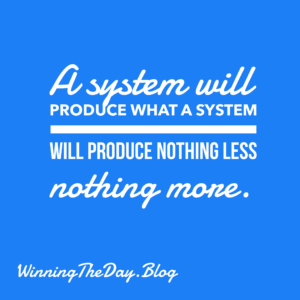It’s all about that prompt, isn’t it? (To the tune of a certain pop superstar)
We hear it everywhere these days: “Use AI to save time!” “Leverage AI to supercharge your recruiting!” “AI will write your next listing description!” But as many of us are discovering, getting a truly useful result from an AI tool isn’t as simple as typing a single sentence and hitting ‘enter.’ The magic isn’t just in the AI; it’s in how you ask.
The quality of your AI output is a direct reflection of the quality of your input. A vague, one-line request will get you a generic, uninspired result. A detailed, well-structured prompt, however, can unlock a level of productivity and creativity that can genuinely transform your real estate business.
It’s all about the prompt.
As a coach, I’ve seen that different personalities click with different methods. There’s no one-size-fits-all approach to AI. That’s why I teach three distinct, powerful frameworks for crafting prompts that deliver results. Depending on your style, you might be a “RISER,” someone who gets “CLEVER,” or a leader who knows when to “REVISE.”
Let’s find the framework that fits you.
Option 1: The “RISER” Framework
Are you the type of leader who likes a straightforward, foundational process? Do you want to build upon what works and elevate it to the next level? The RISER framework is for you. It’s a logical progression from idea to polished final product.
“RISER” is a positive and memorable acronym that empowers you to elevate your initial prompts, taking them to a higher standard of accuracy and refinement.
Here’s how it works:
- Role: Assign the AI a persona. Don’t just ask it to write; tell it who to be. For example, “Act as an expert real estate coach specializing in agent retention.”
- Input: Provide the necessary information and context. This is where you give the AI the raw materials. “I am a broker-owner of a mid-sized firm with 35 agents. We’ve recently lost two top-producers to a competitor offering higher splits.”
- Specifics: Give detailed, explicit instructions. The more specific you are, the better the result. “Write a three-paragraph email to my agents. The tone should be confident and reassuring, not defensive. Mention our unique value proposition of mentorship and our new lead generation system.”
- Expectation: Define the desired outcome. What does success look like? “The expected outcome is an email that boosts morale and reminds agents of the non-monetary benefits of our brokerage.”
- Review & Refine: This is the crucial final step. Read the AI’s output. Is it accurate? Does it match your voice? Edit it. Tweak the sentences. Make it yours. The AI gives you a strong draft; you provide the final polish.
Option 2: Get “CLEVER” with Your AI Prompts
For the more analytical and detail-oriented leader, the CLEVER framework encourages a deeper, more strategic interaction with AI. If you enjoy looking at a problem from all angles and value precision, this is your model.
“CLEVER” is a fun and empowering acronym that suggests a more sophisticated level of interaction with AI.
Break it down:
- Context: Set the stage. This goes beyond basic input. “We are a luxury brokerage in a competitive coastal market. Our target demographic for recruiting is experienced agents doing $10M+ in annual volume.”
- Lens: This is the “perspective” or “role” you want the AI to adopt. “View this from the lens of a top-producing agent who is considering a move. What would they care about most?”
- Expectation: Clearly state your desired outcome. “Generate a list of 10 interview questions to ask an experienced agent that will uncover their true motivations beyond just commission splits.”
- Verify: Check the output for factual accuracy. If the AI mentions specific market data or trends, verify it. This step is critical for maintaining your credibility.
- Edit: Refine the language, tone, and style to match your brand and personal voice. The AI might sound too formal or too casual. Your editing makes it authentic.
- Review: A final read-through of your edited text to ensure it flows perfectly and meets all of your initial requirements.
Option 3: “REVISE” Your Approach
The REVISE framework is for the decisive, action-oriented leader. It’s a dynamic and iterative process for those who like to get a draft, react to it, and quickly mold it into exactly what they need. It’s about shaping the output with strong guidance.
“REVISE” emphasizes the iterative nature of working with AI and is a strong call to action.
Here’s the game plan:
- Role: Define the AI’s persona. “You are an Instagram marketing specialist for real estate agents.”
- Expectation: State the desired outcome upfront. “I need seven Instagram post ideas for a new listing.”
- Viewpoint: Define the specific angle you want the AI to take. “The viewpoint should be focused on the lifestyle benefits of the home, not just the features. Think ‘entertaining friends on the patio,’ not ‘3-bed, 2-bath.'”
- Input: Provide the essential data. “Input is the property address, a link to the listing, and key details like the new chef’s kitchen and the backyard oasis.”
- Scrutinize & Sanitize: This is a powerful step. Check for accuracy, but also for biases or generic statements. “Sanitize” the content by removing clichés like “dream home” or “hidden gem.”
- Edit: Make your final adjustments. Rewrite the call to action. Add a personal story or a specific market insight. This is your final stamp of approval.
The Takeaway
No matter which framework resonates with you, the principle remains the same: a structured prompt is the key to unlocking the power of AI. By moving beyond simple requests and thoughtfully guiding your AI assistant, you can generate higher-quality marketing copy, create more effective recruiting materials, and develop smarter strategies for your brokerage.
So, the next time you open that AI chat window, don’t just give it a task. Give it a role, a purpose, and a clear expectation. You might be surprised at the brilliance you get in return.





